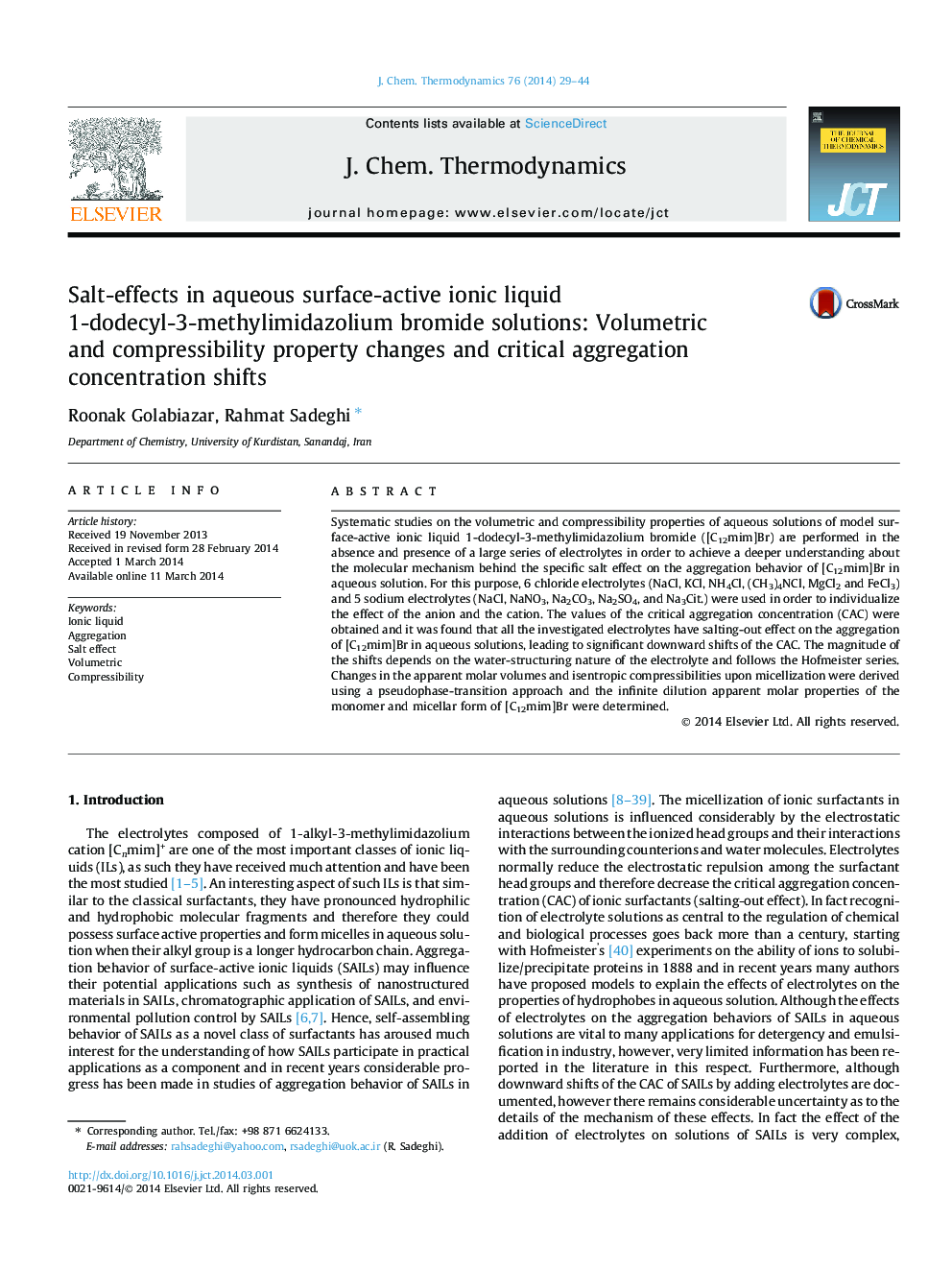| Article ID | Journal | Published Year | Pages | File Type |
|---|---|---|---|---|
| 215445 | The Journal of Chemical Thermodynamics | 2014 | 16 Pages |
•Salt effect on the aggregation of [C12mim]Br in aqueous solutions were studied.•The effect of 6 chloride electrolytes and 5 sodium electrolytes were investigated.•Investigated electrolytes have salting-out effect on the aggregation of [C12mim]Br.•Changes in the volumes and compressibilities upon micellization were derived.
Systematic studies on the volumetric and compressibility properties of aqueous solutions of model surface-active ionic liquid 1-dodecyl-3-methylimidazolium bromide ([C12mim]Br) are performed in the absence and presence of a large series of electrolytes in order to achieve a deeper understanding about the molecular mechanism behind the specific salt effect on the aggregation behavior of [C12mim]Br in aqueous solution. For this purpose, 6 chloride electrolytes (NaCl, KCl, NH4Cl, (CH3)4NCl, MgCl2 and FeCl3) and 5 sodium electrolytes (NaCl, NaNO3, Na2CO3, Na2SO4, and Na3Cit.) were used in order to individualize the effect of the anion and the cation. The values of the critical aggregation concentration (CAC) were obtained and it was found that all the investigated electrolytes have salting-out effect on the aggregation of [C12mim]Br in aqueous solutions, leading to significant downward shifts of the CAC. The magnitude of the shifts depends on the water-structuring nature of the electrolyte and follows the Hofmeister series. Changes in the apparent molar volumes and isentropic compressibilities upon micellization were derived using a pseudophase-transition approach and the infinite dilution apparent molar properties of the monomer and micellar form of [C12mim]Br were determined.
Graphical abstractPlot of ϕV against mIL, for solutions of [C12mim]Br in water (solid lines) and in aqueous solutions of 0.035 mol · kg−1 NaCl (dotted lines) at: ○ and ●, T = 288.15 K; △ and ▴,T = 293.15 K; □ and ■, T = 298.15 KFigure optionsDownload full-size imageDownload as PowerPoint slide
